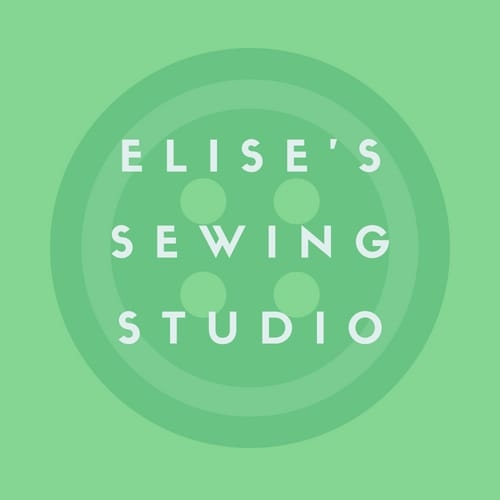We are a participant in the Amazon Services LLC Associates Program, an affiliate advertising program designed to provied a means for us to earn fees by linking to Amazon.com and affilated sites. We may earn money or products from the companies mentioned in this post.
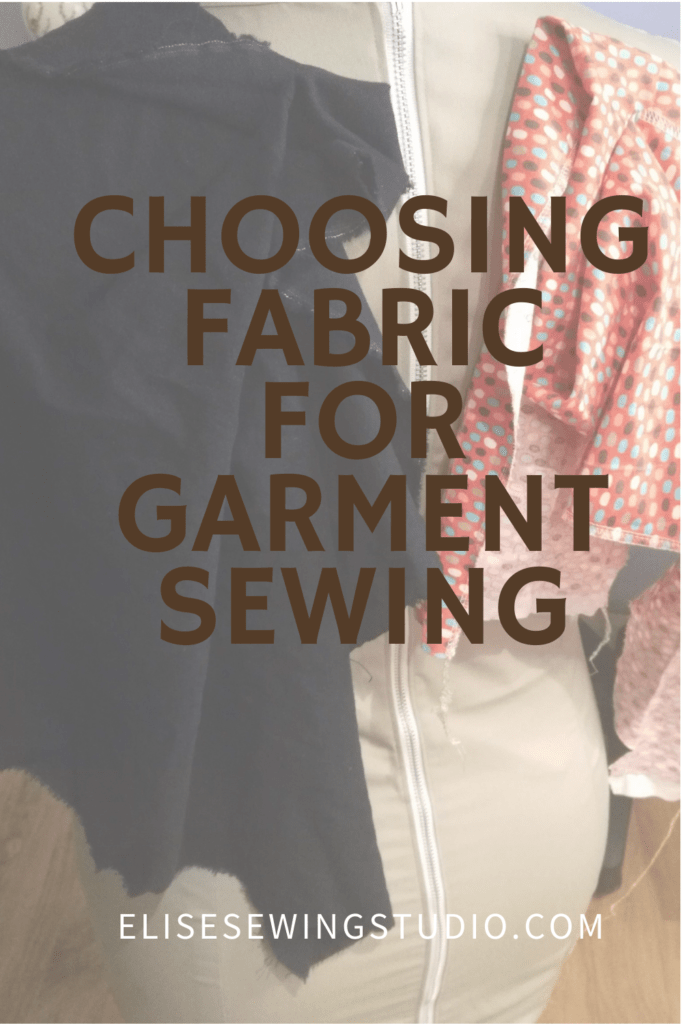
So you have an idea of something you want to sew, but how do you choose the right fabric for the project? Selecting fabric for your project can be tricky for a new sewer to get right, so I thought I’d offer some tips to help you get your project started on thre right foot.
Beyond style choices like colour and pattern, the two most important factors for selecting fabric for your project are fabric drape and stretch/no stretch.
Selecting Fabric Tips: How does it drape?
Fabric drape basically just refers to how a fabric hangs. Let’s imagine that you want to sew a sleeveless blouse.
If you want it to be crisp and have structure, you need a stiffer fabric. This would be more suitable for a blouse that has more tailoring features like darts to get the fit right, as it will otherwise hang straight down from the bust.
If you want your blouse to be soft, or if it has details such as gathers, you need a softer, slinkier fabric – lightweight with more movement like a rayon or a thin cotton. While stiffer fabric does gather, it will be bulkier and the fabric won’t hang in the same way.
Here are a few examples of different fabrics and the way they hang. I have just draped them over a dress form in the same way on each side to illustrate the difference.
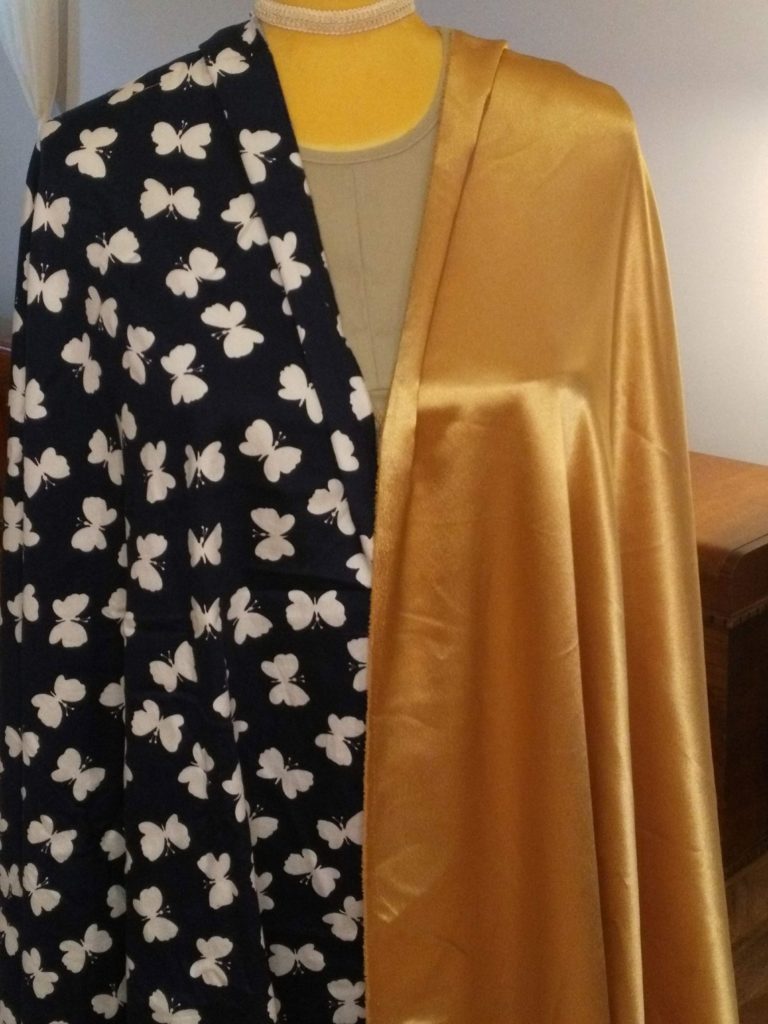
The golden fabric is a satin and has a much softer drape than the navy woven polyester in a heavier fabric. The navy polyester has much more body and is stiffer. The satin fabric falls in softer folds for more movement.
If I were to sew a skirt out of both of these, the navy would fall a bit further out from the body in bigger folds, while the satin would fall softer and have more “swoosh” (technical term) while worn. Both would work, but I think it is important to notice the difference.
Below are two soft fabrics: Another satin in purple and a very fine and sheer silk. This silk is so fine that it could gather and scrunch to be quite small, while the purple satin is thicker and wouldn’t gather as small if they were to be gathered into something such as cuff from a full sleeve, or blouse detail with gathers at the shoulders.
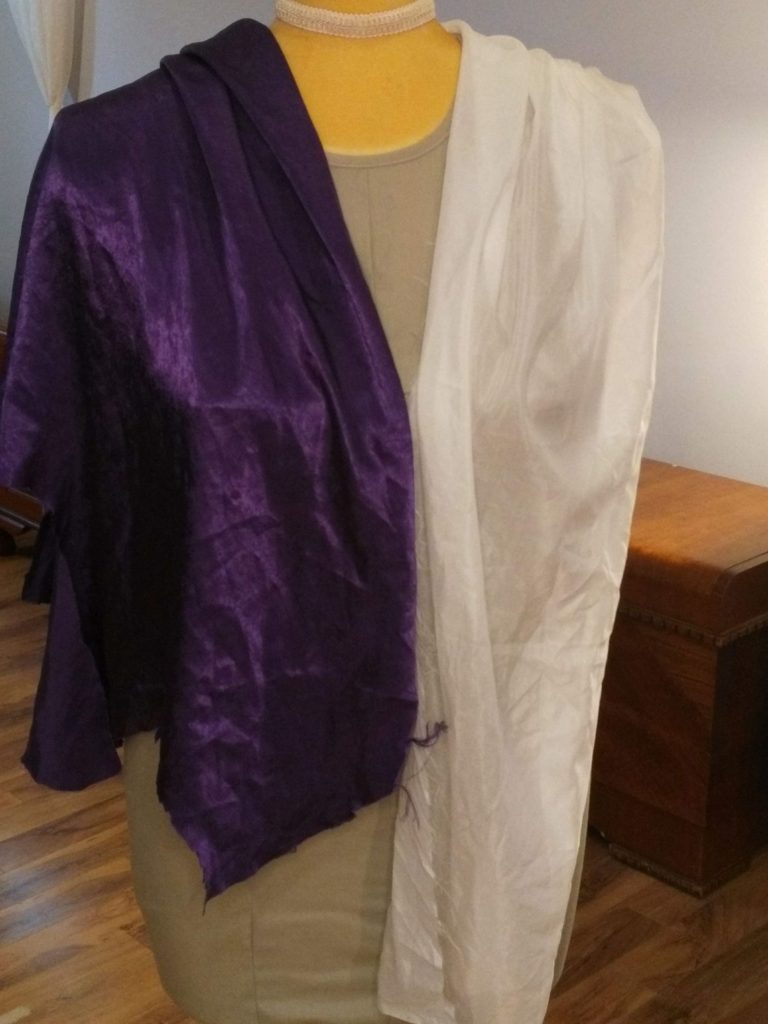
Selecting fabric: Knit versus woven
Knit fabric is any fabric where the fibres are knitted together , and because of the knit structure, the fabric has stretch. An example would be jersey, or “t-shirt fabric”. Again, these fabrics can be thicker or thinner .
For an example, I’ve taken a photo of a heavier knit used for like yoga pants (black fabric) compared to thin jersey fabric (pink) used in a pair of wide legged pants and gathered into the waistband. The heavy yoga pant fabric would be too thick to be gathered this much.
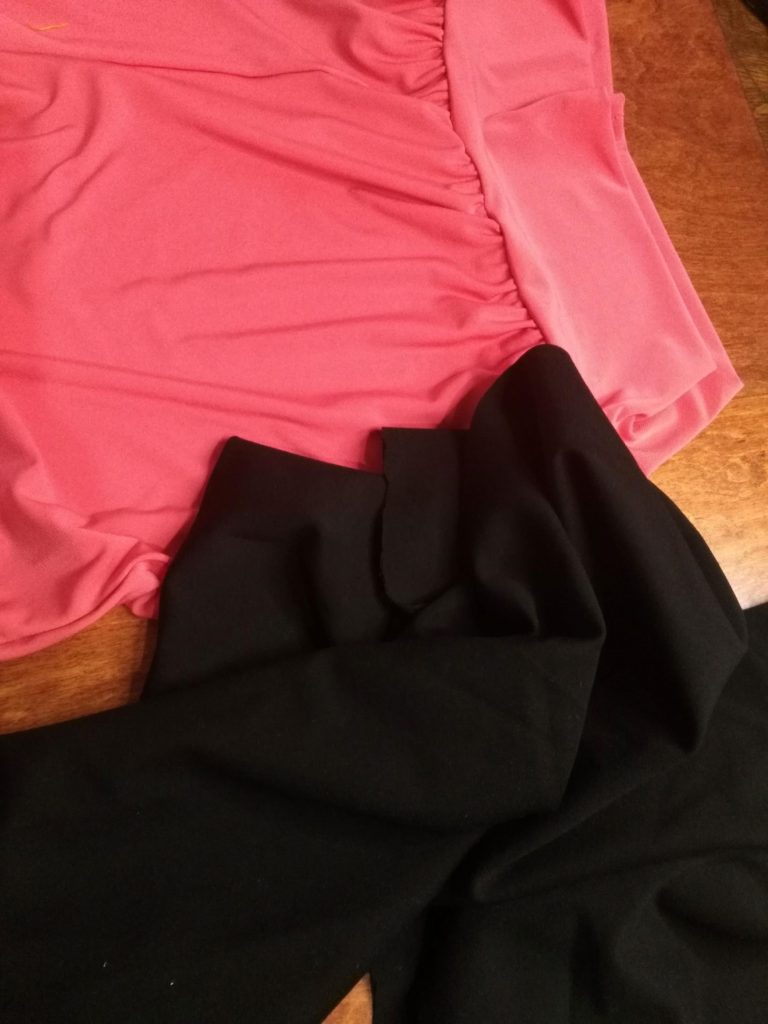
Selecting fabric that your pattern recommends
Your pattern will typically recommend either woven or knit fabric. Woven fabric is not stretchy. It may have some stretch on the bias (diagonal grainline – more on that here). “Woven” is referring to the fabric fibres being woven together to make fabric.
Fabric fibres in knits are literally knitted together (there are different ways of weaving fibres to make fabric – but that is a lesson for another post). It is the movement of the knit fibres that creates stretch, in addition to any stretch fibre content (lycra, elastane for example).
Stop using quilting cotton for your clothes!
Ok, so I might be ruffling a few feathers here and there are some exceptions.
Quilting cotton, while an easier fabric to sew with than some others, has very little drape or stretch. It can be used to create something like a circle skirt or perhaps a perfectly tailored blouse (MAYBE), but that is about it.
It doesn’t move with the body the way a softer woven (like linen or rayon does, for example), and is a bit…stiff and crunchy.
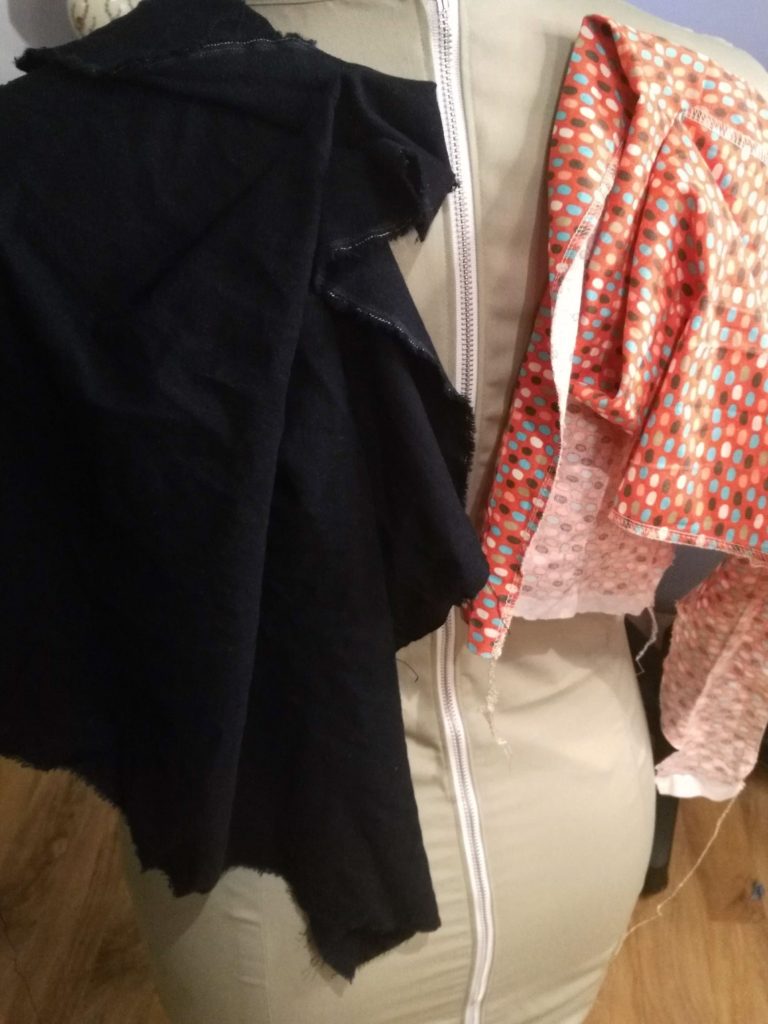
Notice that the folds in the red patterned quilting cotton are quite stiff compared to the navy linen which has softer folds.
The red patterned fabric here is quilting cotton – notice that the fabric folds are quite stiff. The navy fabric is linen, and although linen wrinkles easily, it has movement and falls nicely on the body.
I have seen someone make a dress out of quilting cotton and just felt it didn’t look quite right on her, then make it again in a softer woven fabric and ended up loving the version in softer fabric, because it hung better.
Read your pattern for suggestions
If you have purchased a pattern, there may be suggestions for the type of fabric to buy. You can also look at any images of the pattern that are used to promote the pattern, and pay attention to how that fabric looks – is it soft and fluid, more rigid, or does the project require stretch?
Some fabrics are easier to sew than others.
This post contains affiliate links. Should you click on a link and make a purchase, I receive a commission at no extra cost to you.
You may want to take into consideration how easy the fabric is to work with when you pick fabric for a project.
Very soft and supple fabrics can be slippery to work with. While they are beautiful – just keep in mind your experience with the type of garment you are sewing. If you are brand new to it, an easier fabric with a good amount of drape is rayon. It hangs nicely but isn’t too slippery.
About sheer and tricky fabrics
Probably the hardest types of fabric to sew with would be chiffon or anything sheer (like that very fine white silk from earlier). I find they can fray like crazy. I would not cut this out in advance of using it, or some of it will unravel before you get a chance to use it. As well, it can be very fussy and not want to sit still.
If you are working with a slippery fabric for the first time – take a deep breath and practice on scraps.
For anything other than a flat seam (for example, a set in sleeve) you may want to hand base (loosely hand sew with a running stitch) the fabric in place first if your fabric wants to escape your pins and move around on its own, and then remove the hand stitches after you are happy with your machine stitching.
Should I prewash my fabric?
Almost always. As a general rule, wash the fabric the way you would wash the garment (machine/hand wash or dryer/hang dry). There are a few reasons for this:
Fabric can shrink.
Cotton and natural fibres shrink the most, and if you don’t pre shrink the fabric, your sewing project could end up too small or shrinking in strange ways that distort your project. You don’t want your hard work sewing your own clothes to go to waste because the fabric shrunk after you made and wore it! Don’t skip this step.
Sizing in fabrics:
Fabrics are treated with chemicals in the weaving/knitting process which should be washed out before you sew with them. Fabric is also softer after being washed.
I also wash anything for myself that I am tailoring or upcycling, especially if it is secondhand or I didn’t pull out of my own closet. I do this to start with clean fabric and pre shrink.
If you are looking for an eco friendly and convenient way to wash your clothes and fabrics, I recommend Tru Earth Eco Laundry Strips. These are laundry strips without the big plastic jug of laundry detergent, cutting down on packaging and it gets delivered to your door.
I hope that makes selecting fabric for your next project easier.
Since writing this post, I participated in a Fabric 101 course! If you would like to do a deep dive into different types of fabric and get a really solid foundation in selecting the right fabric for your project, check it out here.

You may also like the posts: Fabric Words: What is a grain line? and Sewing Patterns and Tools
Want to learn more about altering clothes you already have, to fit your unique body and style? Receive my free guide full of tips to get you started doing your own clothing adjustments by signing up to my newsletter here.
